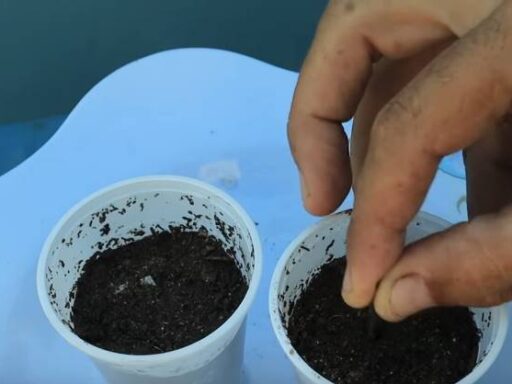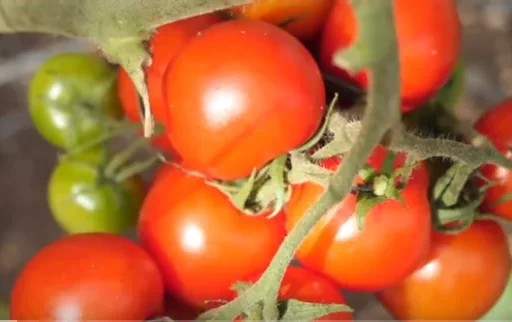Growing zucchini is a rewarding endeavor for many gardeners, but it comes with its fair share of challenges. Squash vine borers, squash bugs, and pollination issues can often prevent gardeners from enjoying a full harvest. However, there are methods and certain zucchini varieties that claim to offer solutions to these common problems. In this article, we’ll explore a particular variety of zucchini that promises pest protection and pollination-free fruiting. We’ll also dive into the results of an experiment to see if this zucchini lives up to its claims.
The Zucchini Challenge: Pests and Pollination
Zucchini, like other cucurbits such as cucumbers and squashes, are vulnerable to a variety of pests and diseases. Squash vine borers and squash bugs can wreak havoc on a crop, decimating plants before they have the chance to fully mature. Moreover, zucchini plants are dependent on pollinators like bees to transfer pollen from male to female flowers in order to set fruit. In some cases, gardeners may have to resort to hand-pollination, which can be time-consuming and labor-intensive.
But what if there was a zucchini variety that didn’t need pollinators and was resistant to common pests? That’s where parthenocarpic varieties come into play.
What Are Parthenocarpic Cucurbits?
Parthenocarpic cucurbits are a type of plant that can produce fruit without the need for pollination. Unlike self-fertile plants that still require pollen transfer between male and female flowers, parthenocarpic plants can set fruit even in the absence of pollen. This is a game-changer for crops like cucumbers and zucchini because it means you can grow these plants under insect netting or in greenhouses, where they’re protected from pests.
In recent years, parthenocarpic cucumber varieties have been a major success, allowing gardeners to grow cucumbers without worrying about pollinators or pests. These cucumbers thrive in protected environments and produce bountiful harvests. So, could the same be true for zucchini?
The Experimental Zucchini Variety: Sure Thing
Sure Thing is a zucchini variety that claims to set fruit even in cool, cloudy conditions and in the absence of male pollen. This made it a candidate for testing whether it could be grown under insect netting, just like parthenocarpic cucumbers, without the interference of pests like squash vine borers and squash bugs.
The experiment began with high hopes. The zucchini plants were started in transplant trays and later moved into a raised bed garden. The plants were kept under insect netting for full protection from pests, while a shade cloth provided some relief from the hot summer sun. As the plants matured, they seemed healthy and were full of flowers. However, there was one major issue: all the flowers were male.
The Results: Zucchini vs. Cucumber

Despite growing under similar conditions, the zucchini plants failed to produce any female flowers, meaning no fruit was set. Meanwhile, parthenocarpic cucumbers growing in the same bed thrived, producing an abundance of cucumbers without any pollination. This raised the question: why did the zucchini plants not perform as expected?
One possible explanation is that the Sure Thing zucchini variety may not be well-suited for hot, humid climates. The variety is advertised as thriving in cloudy, cool conditions, so it’s possible that the high temperatures and humidity in the southeastern region negatively affected the plants. Additionally, it’s possible that this variety is not fully parthenocarpic, meaning that some pollination may still be required for fruit to set.
Lessons Learned: Finding the Right Zucchini Variety
Although the experiment didn’t yield the desired results, it provided valuable insights. For gardeners in cooler, cloudier regions or those growing in greenhouses, Sure Thing might still be a viable option. However, for those in hot, humid climates, this variety may not be the best choice.
The failure of the Sure Thing zucchini in this experiment doesn’t mean the search for a parthenocarpic zucchini variety should end. There are other varieties available that claim to be partially parthenocarpic and more heat-tolerant. For gardeners dealing with high temperatures, it may be worth exploring these options.
What’s Next?
The next step in the experiment will be to find a more heat-tolerant zucchini variety that can handle hot, humid conditions. There are still several months left in the growing season, and the search for a zucchini that can thrive under insect netting without pollinators will continue. For now, the focus will shift to experimenting with different varieties and growing conditions to find the perfect match.
In conclusion, while the Sure Thing zucchini didn’t deliver as promised, the lessons learned from this experiment will help guide future attempts. Gardeners in cooler climates may still find success with this variety, but those in hotter regions may want to try different parthenocarpic options. Stay tuned for more updates on the quest to grow zucchini free from pests and pollination challenges.





